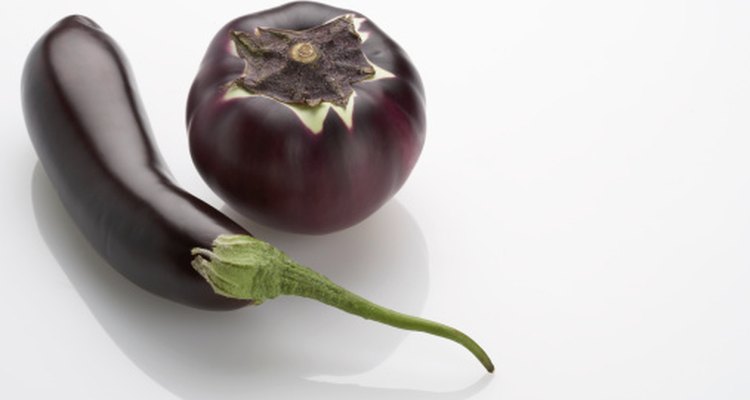
Lebanon is a Middle Eastern country that has a cuisine influenced by foreign occupation and migrations. The Arab culture predominates, and the tradition of shared family-style meals brings a variety of healthy selections to meals. Innovative preparation of Mediterranean diet staples provides low-calorie options in the home and in restaurants.
Facts
Lebanon’s location on the Mediterranean Sea has shaped its culture and cuisine. The port cities of Beirut and Tripoli historically played a role in the adoption of new ideas. Trade explorations in the Middle East region also influenced the cuisine. Lebanon was an outpost of the Ottoman Empire until the end of World War I, then became a French colony until its independence in 1943.
Features
Dishes made with fresh vegetables, fruit, dairy products, fish, nuts and seeds are the foundation of Lebanese cuisine, notes “Mood Magazine.” As in most of the Mediterranean, olive oil finds a place in many recipes. Sean Sheehan and Zawiah Latif, authors of “Lebanon” state that the most common meat in Lebanon’s cuisine is lamb, with poultry as a popular alternate.
Significance
With a few exceptions, grilling and sauteing are the preferred cooking methods. The innovative dishes that use whole grains often pair vegetables, herbs and spices with smaller portions of high-calorie items, such as red meat. Fish, a low-calorie, low-fat protein also appears on tables frequently.
Types
Chickpeas are high-fiber, low-fat legumes. They are the main ingredient in two of Lebanon’s most widely eaten dishes. Hummus, a combination of sesame seed paste, mashed chickpeas and lemon juice with spices, which appears on most tables for lunch and dinner. Fafalel is fried ground chickpea balls stuffed into pita bread with generous portions of lettuce, tomatoes, onions and a yogurt sauce. Although fried, it is healthy, vegetarian snack. Fuul, a third favorite, has lentils and red beans as its base, according to “Mood Magazine.”
The Lebanese often cut lamb and other meat into small cubes and combine it with vegetables as shish kabob or in stews. Tabbouleh features bulgur, while kibbeh uses cracked whole wheat. Baba ganoush, a spread or dip similar to hummus uses eggplant as its base. Grape leaves and squash often have a filling of rice and herbs.
Identification
To find low-calorie Lebanese foods at your favorite restaurant or for preparing recipes at home, choose a vegetable, legume or grain dish. Hummus and baba ganoush are common appetizers on many restaurant menus. The Centers for Disease Control and Prevention notes that 1 tbsp. of hummus paired with 16 baby carrots only has 75 calories. Baba ganoush has 80 calories in a 1 oz. serving, according to Fat Secret. An entree like tabbouleh has 175 calories for a 1¼-cup serving, according to Food Network. Dolmades, or grape leaves stuffed with rice alone is low-calorie, but versions with meat are not.
Shish kabob is a Lebanese meat dish that won’t break your calorie budget. It combines vegetables with cubed chunks of lamb on a skewer. A standard serving of one skewer with 3 oz. of lamb has 274 calories. Samkeh harra, a popular grilled fish dish and shish taouk, made with white chicken meat, are also low-calorie choices.
Related Articles
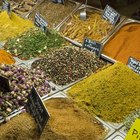
Afghan Spices

Nutritional Information for Ethiopian ...
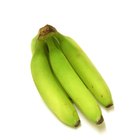
The Most Popular Foods of Puerto Rico

African Food Facts
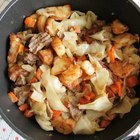
Traditional Irish Foods for Lunch

Difference Between Mexican Oregano & ...

Salmon Dinner Menu

How to Eat Ethiopian Food
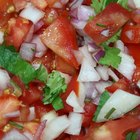
Fiesta Foods for Spanish Class
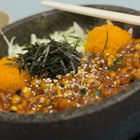
Korean Food Nutritional Value
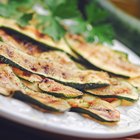
How to Grill Zucchini Like Japanese ...
What Foods Do Hispanics Make for ...
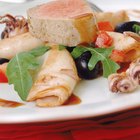
Mediterranean and Asian Diets

Classic Russian Spices
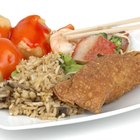
Restaurants on 50th - 52nd Street in ...
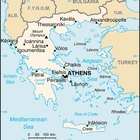
Staple Foods in Greek Culture
Toppings for Quinoa

Typical Portuguese Diet

Who Wears Red Fez Hats?

Facts About Italian Cuisine
References
Resources
Writer Bio
Carol Luther has more than 25 years of business, technology, and freelance writing experience. She has held leadership roles in higher education management, international development, adult education, vocational education, and small business support programs
Photo Credits
Blue Jean Images/Digital Vision/Getty Images